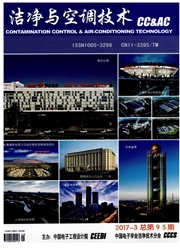

 中文摘要:
中文摘要:
居住者可使用的各种控制手段(如门、窗和电扇等)对改善室内热状况有着很重要的作用,通过对上海自然通风房问夏季室内外空气温湿度进行连续遂时测量,分别用预测平均评价(PMV)方法和适应性热舒适模型(AM)分析了室内热舒适状况.利用AM估算了可控制室内热环境建筑的节能潜力,这一方法指出,上海地区潜在的节能率为30%.结果表明,提高室内热环境控制方法的可用性与正确使用程度,具有很大的节能潜力.
 英文摘要:
英文摘要:
The use of various controls (such as doors, windows and fans, etc. ) available to occupants plays a significant role in modifying indoor thermal condition. Indoor and outdoor air temperature and relative humidity in a natural ventilation room in Shanghai were monitored continuously in summer, and the indoor thermal environment was analyzed and estimated by employing Predicted Mean Vote (PMV) model and Adaptive Model (AM), respeetively. The energy .saving potential of AM applied in the building with controls available to occupants is calculated,and 30% of cooling energy could potentially be saved in Shanghai. These results indicate that availability of controls and their appropriate use have large energy saving potential.
 同期刊论文项目
同期刊论文项目
 同项目期刊论文
同项目期刊论文
 Relative Levels of Indoor and Outdoor Particle Number Concentrations in a Residential Building in Xi
Relative Levels of Indoor and Outdoor Particle Number Concentrations in a Residential Building in Xi 期刊信息
期刊信息
